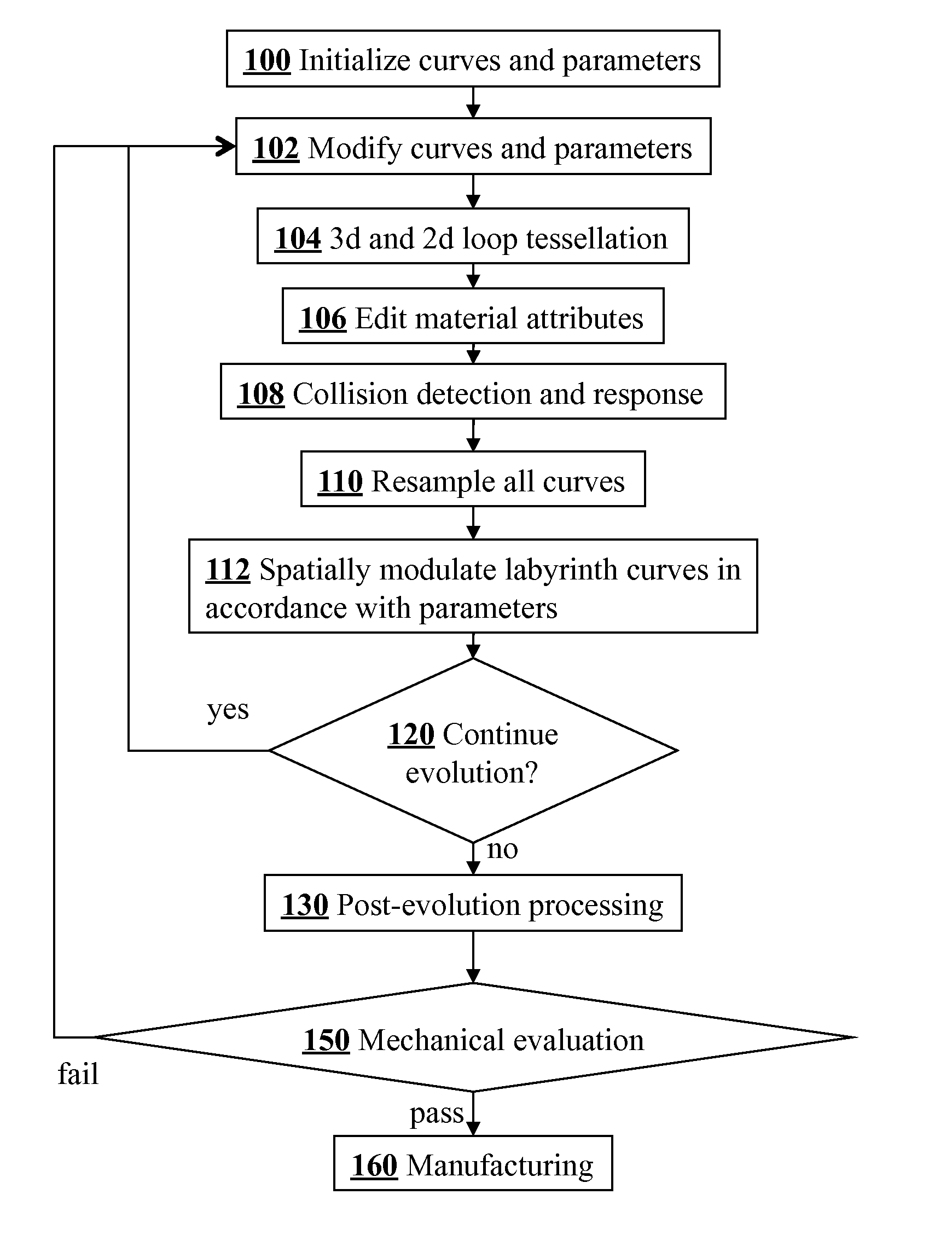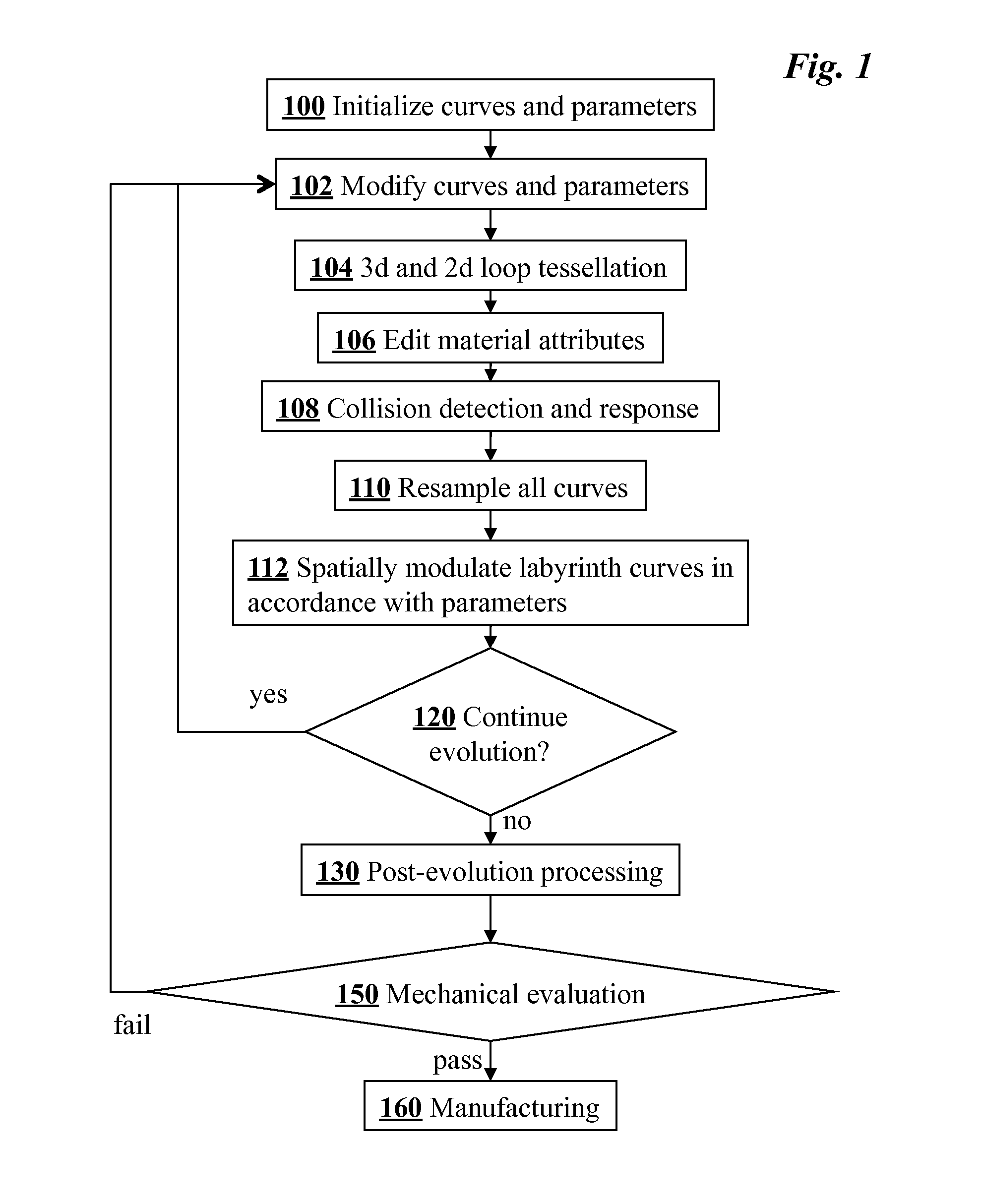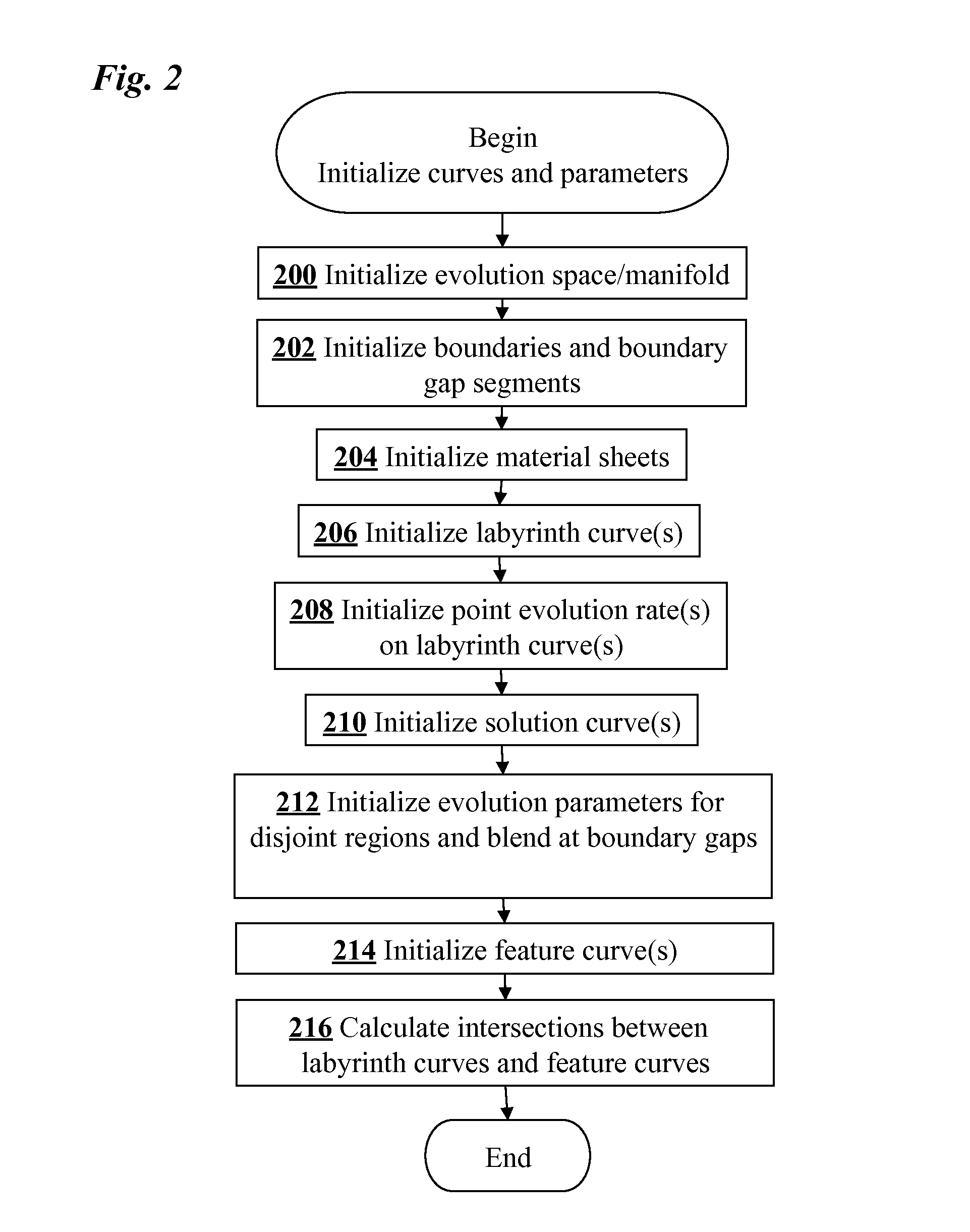Methods for creating developable surfaces
- Summary
- Abstract
- Description
- Claims
- Application Information
AI Technical Summary
Benefits of technology
Problems solved by technology
Method used
Image
Examples
Embodiment Construction
[0145]Main steps of a method for generating textured developable surface sculptures according to an embodiment of the present invention are shown in FIG. 1. The process starts with the initialization of curves and parameters, step 100, which is shown in more detail in FIG. 2. First, the evolution space / manifold is initialized in step 200. In addition to a geometric description, the evolution space may comprise texture information. These textures may be stored in the form of 2D texture maps associated with the evolution space, 2D texture maps associated with other texture surfaces, or 3D textures, including procedural textures defined on volumetric regions containing the evolution space. In step 202, the boundaries and boundary gap segments, which are explained in more detail in US PG Publication No. 20080297514, are initialized. In a preferred embodiment, the system analyzes the curve network and gives preliminary recommendations for changes that might improve the strength of the fi...
PUM
 Login to View More
Login to View More Abstract
Description
Claims
Application Information
 Login to View More
Login to View More - R&D
- Intellectual Property
- Life Sciences
- Materials
- Tech Scout
- Unparalleled Data Quality
- Higher Quality Content
- 60% Fewer Hallucinations
Browse by: Latest US Patents, China's latest patents, Technical Efficacy Thesaurus, Application Domain, Technology Topic, Popular Technical Reports.
© 2025 PatSnap. All rights reserved.Legal|Privacy policy|Modern Slavery Act Transparency Statement|Sitemap|About US| Contact US: help@patsnap.com



